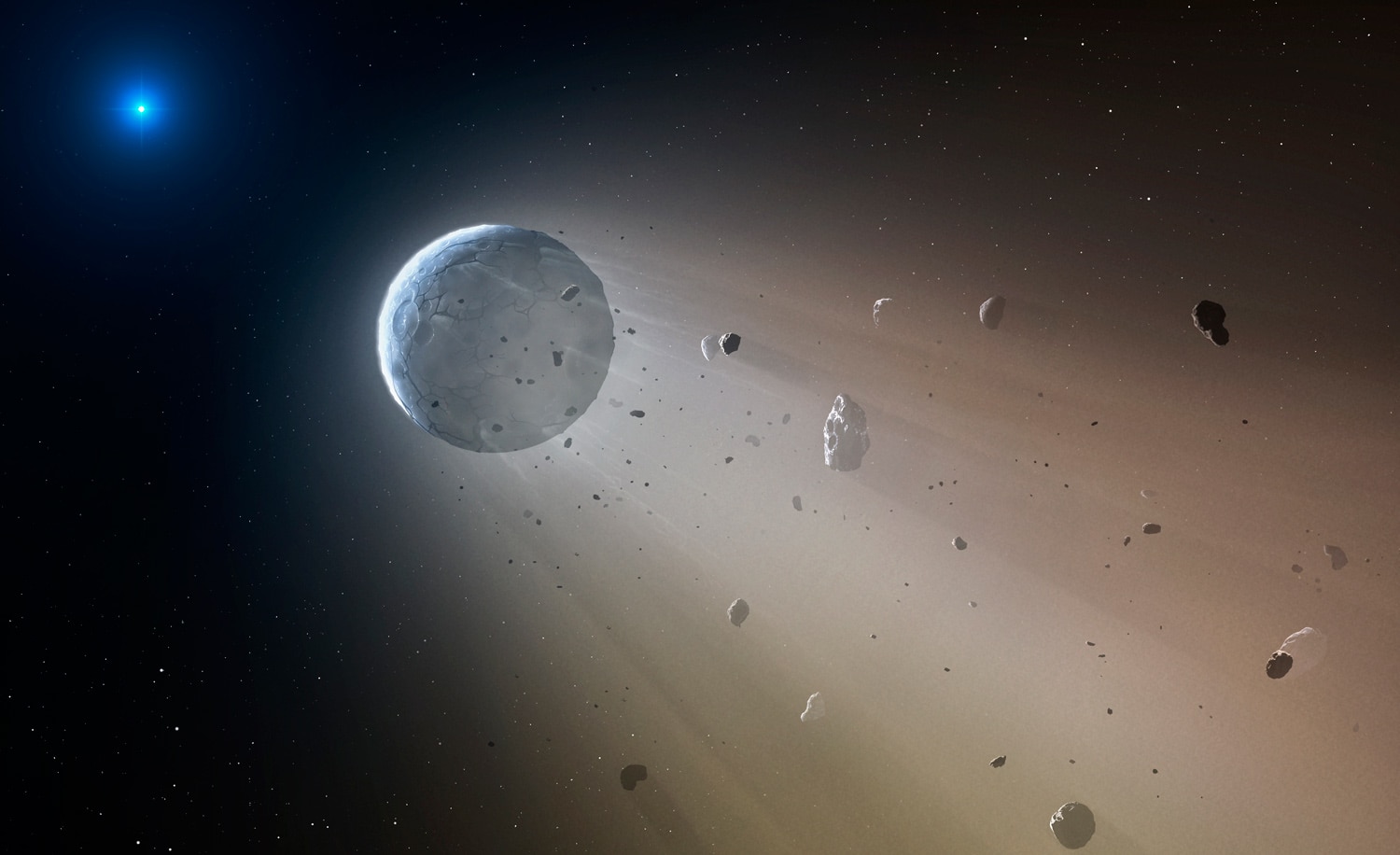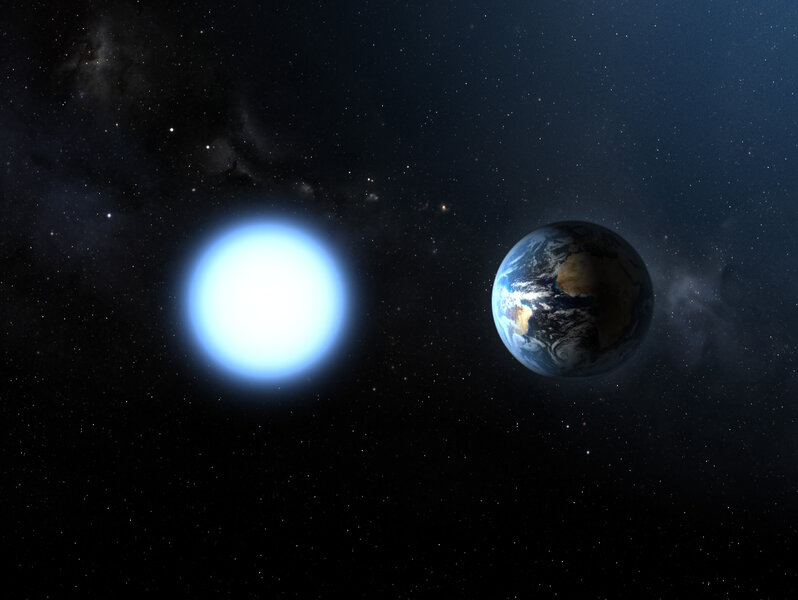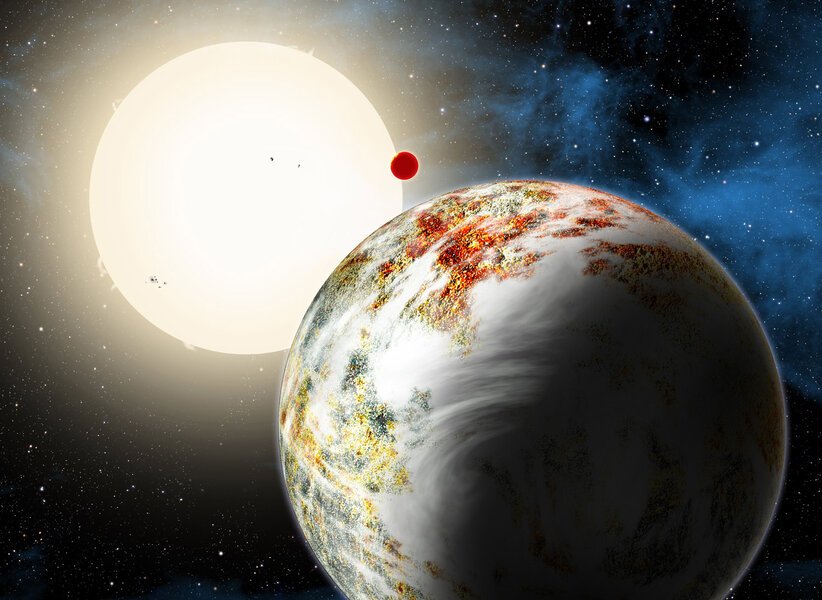Create a free profile to get unlimited access to exclusive videos, sweepstakes, and more!
Half-eaten exoplanet entrails in zombie stars show how weird alien worlds are
Planetary debris shows alien worlds are extremely diverse.

We know lots of rocky worlds roughly similar to Earth are out there orbiting other stars. The problem with finding and learning about them is that they're small and faint and extremely difficult to observe.
So some astronomers came up with an idea borrowed from archaeologists: Find their gravesites and examine their remains.
The key to this idea is an object called a white dwarf. In a very brief nutshell, when stars like the Sun use up the nuclear fuel they swell up into a red giant, blow off their outer layers, and eventually expose their core to space. This core — with about half the original mass of the star but so dense it's about the size of the Earth — is extremely hot but small, so we call it a white dwarf.
You're probably familiar with the idea that in a liquid or gas, heavier/denser stuff sinks and lighter stuff floats. This phenomenon depends on gravity, and white dwarfs have intensely strong gravity. Because of that, heavy elements on the surface of a white dwarf sink rapidly into the interior, leaving behind the lighter elements hydrogen and helium.
Roughly 75% of all white dwarfs seen appear to have surfaces of nearly pure hydrogen and helium. The rest have what astronomers call "pollutants": heavier elements floating around. Mind you, these should sink extremely rapidly into the white dwarf, so the fact that we see them at all means there must be a supply of them actively falling onto the white dwarf from space. What's the source?
Given that these elements tend to be things like magnesium, calcium, silicon, and iron — and knowing that many stars like the Sun have planets — the obvious conclusion is that these elements are from rocky planets and asteroids that once orbited the star.
But how? If a rocky planet gets too close to the white dwarf (which can happen over time as the system is destabilized by the star's death and the passage of nearby stars) the phenomenal gravity can tear the planet apart via the tidal force. The debris then falls onto the star and voilà: Pollution.
This method has been used to detect the remains of planets before, and in fact the very first evidence humanity ever had of planets outside our solar system was from observations of a nearby white dwarf taken in 1917! At the time the data showing iron, calcium, and magnesium in the star weren't understood, but now we know that star died and then ate its planets. It's a zombie.
This is already very cool, but it gets better: The amounts of these elements can be used to figure out a lot about the semi-digested planetary remains, and therefore we can determine something about the planets themselves before their demise.
This is just what some astronomers did. They looked at 23 white dwarfs all within about 650 light years of the Sun and all of which have very precise measurements of the amounts of calcium, magnesium, silicon, and iron in them. They then looked at the relative abundances of these elements, comparing say the ratio of magnesium in a white dwarf to silicon, and calcium to iron. These ratios can then be compared to these ratios in bodies in our own solar system to see if these alien planetary remains look anything like what we see locally.
The astronomers got a surprise: They don't. They really don't.
Looking at numbers for Earth, the Moon, Mars, and a lot of meteorites on Earth that came from various asteroids in the solar system, the elemental abundances don't match what they see in these white dwarfs. For example, some meteorites have a lower magnesium to silicon ratio, and some have a higher one, but very few have any that match or are close to what's seen in those dead stars.
This strongly implies that exoplanets (alien worlds) are mineralogically very different from Earth. If they were similar to us, then we'd see similar ratios. We don't, so they aren't.
Why are they different? That's a good question. Planets form along with their stars, so the astronomers looked at the ratios of these elements in 4,000 nearby stars like the Sun, and found the diversity in ratios is nowhere near the diversity seen in the planetary debris. So even though they start with very roughly the same building materials, something in the formation process and evolution of these planets as they age changed them.
Some astronomers have claimed that the elements seen in polluted white dwarfs appear to come from the crusts of rocky planets due to some of the ratios seen. That would be an important conclusion, because crust dynamics depend strongly on things like plate tectonics, which in our solar system is exclusive to Earth.
But in this new work the astronomers dispute that. They see iron, silicon, and magnesium ratios that match the mantles of planets much better than crusts. That makes sense; the Earth's crust is less than 1% of its total mass but the mantle is more like 67%, so you'd expect to see far more planetary mantle material in these white dwarfs than crust. That's disappointing but at least consistent with what we understand.
They also modeled conditions in planetary mantles given these weird elemental ratios and found these planets would have minerals in them that are very different than found on Earth, some so bizarre that they even had to come up with new classifications for them.
This is an interesting and certainly different take on how to examine rocky exoplanets. And it implies that if and when we can more closely examine extant ones, planets still happily orbiting their Sun-like host star, we'll find that the word "alien" really does apply to them.





























